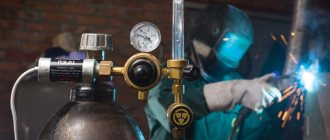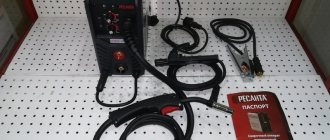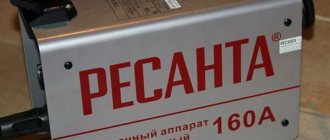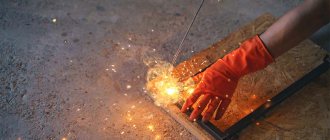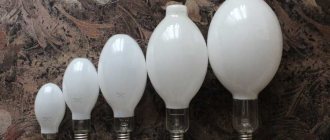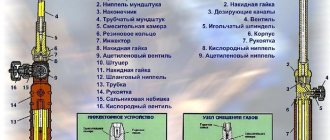Welding metal structures becomes easier and more precise. Using a magnetic welding square, the master ensures the precision of the joining of two products, and, accordingly, the precision of the assembly of the entire structure. Therefore, experts themselves use this tool when performing welding work, and advise novice welders to purchase it.
Advantages of working with a magnetic square
The magnetic corner for welding is used both for one-time welding operations and for continuous work. Here are the benefits of using it:
- Using a square, two joining elements are fastened, which frees the welder from supporting one of them. And this is freedom of action, plus the convenience of operations.
- With the help of a magnetic square, the fixation of two parts is carried out clearly; accordingly, the welding seam will be carefully welded, which will ultimately improve its quality indicators. Therefore, when welding high-precision metal structures, a welding magnet is no longer an advice or recommendation, it is a necessity.
- Minimizing labor costs, especially for work related to the manufacture of complex structures. There is no need to use the labor of two workers: a welder and an assistant. The welder himself will do everything right. This is especially noticeable when a large volume of welding work is performed.
- A magnet is used to fix parts located in different planes.
- In addition to welding, a magnetic square can be used for marking and cutting steel elements, holding them firmly in place.
Features and Benefits
The advantages of these devices include the fact that with their help you can save time on preparing products for welding. These details allow you to:
- Reduce work complexity. The workpiece is secured very simply.
- Ability to hold the workpiece in any position.
- The small dimensions of the device greatly simplify the work.
- Automate welding. Magnets make it possible to quickly disconnect or connect the fastening element.
The simplest products have simple welds, but often they have complex seams and configurations. The accuracy must remain at a high level.
Such welding magnets are characterized by a very simple design. A pair of metal plates with a magnet between them. The most common form is that of a house with a roof and a trimmed ridge. There are other, more complex options for processing products in all three areas.
How to choose a magnetic corner
The welding magnet is available on the market in several configurations, which are based on the angles of installation of the two elements to be welded. The companies that produce this device offer configurations with standard angles: 45-60-90-135°. Most often, each model has several mounting angles for multifunctional use of the magnet. But there are also standard models with certain positions: only connecting parts at an angle of 90° or 30°, and so on.
Manufacturers also offer universal models, the angles of which can be changed to suit the required parameters. They are most often used for welding work associated with the assembly of complex structures, where, in addition to flat elements, rounded cylindrical ones are also used.
By type, magnetic corners are divided into:
- switchable;
- with permanent magnet.
The first option is magnets, which in their design have levers that turn off the magnetic field. That is, when the position is off, the device does not stick to the metal. In the second, on the contrary, it is firmly attached to it. This is a very convenient function that allows you to easily adjust the installation of parts relative to each other.
Magnet planes for welding work work separately. That is, you can turn off one or another plane (face) separately. If you have secured a metal workpiece to one of the planes, then the second one can be adjusted at the installation location when the second plane is turned off. Once the exact mounting location has been selected, the second magnetic edge can be turned on, firmly securing the second workpiece.
Attention! This type of welding magnets can support the weight of a part up to 35 kg in a suspended position.
Permanent magnet welding fixtures are a simple design consisting of two metal templates that form the joining angles of the two parts, and a magnet that is located between the two templates. It is permanent, which sometimes complicates the fitting process. In all other respects, it is the same magnet, with the help of which it is easy to fix the location of the parts and assemblies to be welded.
There is an opinion, and this is confirmed by physicists, that the magnetic field will affect the welding process. It all depends on the strength of the field. The larger it is, the lower the quality of the weld. But the magnets installed in magnetic angles are not strong enough to indicate a decrease in quality.
Types of holders
Magnetic holders can be switched off or permanent. These devices make it possible to fix elements by simply turning them on.
They are good because the locking can be stopped by simply turning the corresponding switch. This also makes it easier to clean the magnetized surface from small pieces of iron and shavings.
Also, magnet angles are universal and standard.
Magnetic clamps
These structures allow you to pull elements together, temporarily fixing them. The most common form is in the form of a “P” symbol laid on its side. One of the sides serves as a permanent lock, and the other is equipped with a screw clamp. The dimensions of the workpieces that are fixed with clamps are limited only by their characteristics. It is very simple to use - the elements are located inside the structure, after which they are tightened with a threaded screw.
Pipe spacers
If you need to make small gaps between the surfaces being processed, then you can make the simplest version of a spacer from a piece of reinforcement or pipe. However, to save time on this procedure, you can purchase a factory product.
The essence of this device is also based on a screw. But this design works by expanding, not compressing.
Types of magnets by design
As mentioned above, magnetic clamps come in different configurations, with which you can set the required welding angle between two metal elements. But there is also a division according to purpose.
- Fixed angle is a common and traditional design.
- With adjustable angles. This tool is flexible type. With its help, you can set any angle, which allows you to carry out welding work in complex structures.
- With a permanent magnet or switchable (this was already mentioned above).
- Polygonal models, the designs of which contain several standard angular mates.
- There is a division according to power: for fixing heavy elements and light ones.
These indicators affect the cost of the tool. The more positive characteristics, the more expensive it is.
Types of magnets
There are two types of magnetic welding holder: angular and universal.
A corner magnet (also called a “magnetic welding corner”) is a simple device that is used to join two parts at an angle. Often corner welding magnets have a fixed angle. For example, you buy a magnet for welding at a 90 degree angle. Accordingly, you will not be able to join parts at a different angle.
But we do not recommend purchasing only one right angle welding fixture. It is better to buy a set of magnetic welding clamps for joining at different angles. The Archimedes magnet has proven itself well for welding at an angle. It is switchable. Switchable magnets for welding are very convenient to use, they fix parts well and work flawlessly.
Universal magnets can be used for welding at any angle. This is the best option, but it is not cheap. But universal magnets can be used with parts of any size and properties. And once you buy them, you will no longer have to buy other magnets. Typically, a universal magnet consists of moving parts fastened together. These parts can be folded into any desired shape and used in your work. Because of their appearance, such magnets are nicknamed “snake”.
Homemade welding magnet
Is it possible to make magnetic angles for welding with your own hands? No problem, because their design is quite simple. What will you need for this?
- Round magnet with a diameter of 80-90 mm and a thickness of 15 mm.
- Steel sheet 2 mm thick.
- Four M6 bolts 40 mm long and nuts for them.
Templates of the required configuration are cut out of the sheet (use a grinder). There should be two templates. Please note that the size of products cut from a steel sheet should not be less than the diameter of the magnet. All edges are adjusted exactly to the required angles, they are necessarily ground to maximum cleanliness. The surfaces are also polished so that rust and other defects do not reduce the strength of the magnetic field.
A magnet is installed on one of the templates exactly in the middle, and marks are made for fasteners. There should be four holes: three in the corners, one in the middle. Using the marks, through holes are drilled in two templates.
The angle tool is assembled by installing M6 bolts into the holes. In this case, it is necessary to install nuts not only on the end of the bolt, but also between the templates, so that during the process of screwing in the threaded connection, the corners of the homemade tool do not bend. It is important that the round magnet does not protrude beyond the edges of the templates. The shanks of the bolts that extend onto the nuts must be cut with a grinder. Here is the technology to make your own magnet for welding work with your own hands. A magnetic welding fixture is a simple but necessary tool. Today it is used by both professionals and welders just starting out.
Choosing the right square: here and now
Dimensions of the square for welding.
Everything is simple here: for simple home welding work, you will need holders that are simple in design. Complex processes involve fasteners with technological bells and whistles - from switchable magnets to heat-resistant options, from simple corners to 3D models.
One way or another, a high-quality magnetic holder for welding must be resistant to significant mechanical loads and have sufficient tensile strength. In the end, we are talking about fixing not fluff, but heavy metal parts. Our squares must be able to fix them completely and irrevocably. Only in such cases will welding holders make sense at all.
If you are engaged in complex welding work, and if you have the opportunity, then it is best to choose high-quality holders with on/off magnets. Such devices will help you turn on or off not just the entire square, but individual edges.
This mode makes it possible to independently work with complex tasks. Corners of this class are usually made of chrome-plated metal with increased strength.
The cost of welding holders cannot be called low; these are not cheap devices. The price depends on the number of standard angles, attraction power, adjustment mechanisms, brand, etc. The simplest copies cost about four hundred rubles, a standard set costs around a thousand rubles. Well, professional magnetic welding devices with technological additions increase in price to 3,000 - 5,000 rubles.
Criterias of choice
Before purchasing a magnet for welding, you need to carefully analyze issues related to the mode of use of the device and the scope of its application. There is no need to overpay for a brand and buy an overly expensive device if it will be used rarely and not for professional purposes.
Therefore, when choosing a magnet, you must adhere to a number of simple rules:
- The better the quality of the device, the longer it will retain its technical characteristics. The magnet is located in close proximity to the welding zone, therefore it is constantly exposed to high temperatures, which systematically deteriorate its properties;
- The higher the field power, the wider the range of use of the device. Serious models of magnets are capable of holding parts weighing up to 35 kilograms;
- The higher the list of working angles, the more functional the device is. The most preferred magnets are those with the following angles: 30, 45, 60, 75, 90 and 135 degrees;
- The greater the number of angles, the more varied the approach to welding work will be.
Magnetic devices have virtually no effect on the quality of the welding arc. But today there are still cheap models produced by Chinese manufacturers, the use of which can negatively affect the work process. You should refrain from purchasing these devices.
If funds allow, then it is worth taking a closer look at devices with a magnet activator. Today, the domestic market is represented by a fairly large number of these devices.
A switchable magnet for welding is an indispensable assistant for a professional in his daily work activities. It allows you to effectively perform welding work independently, during the absence of an auxiliary worker. But do not forget that if the wrong magnet is chosen or its quality is low, a situation may occur when the assembled structure collapses at the most inopportune moment, thereby causing irreparable damage to the work process.
